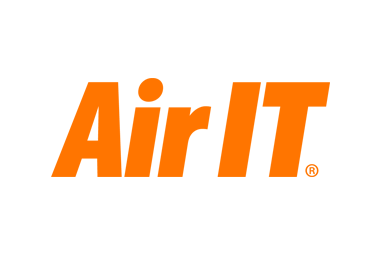Dr Alastair Cochran (1929 – 2024)

12/03/2024
Dr Alastair Cochran, the author of a book many have described as ‘The Bible’ for golf coaches and an invaluable collaborator with The PGA on coaching and equipment, has passed away at the age of 94.
Educated at George Heriot’s School and Edinburgh University, Alastair studied Physics and Nuclear Physics in attaining his PhD and followed up by working primarily in academic institutions.
These included the Royal Military College of Science, Liverpool, and Aston Universities, plus industrial research with Ferranti and the Atomic Energy Authority.
When time allowed, Alastair was not only a keen but accomplished golfer. He played off scratch in his 20s and, a member of Moor Hall Golf Club, Sutton Coldfield, and the R&A, continued to play more than 60 years later.
He combined his enthusiasm for the game with his scientific expertise and in the mid-1960s had a four-year spell as the Director of the Golf Society of Great Britain’s panel of scientists, studying the golf swing and related matters.
In addition to carrying out much of the theoretical work and mathematical analysis involved, Alastair co-authored the book that resulted from the project: The Search for the Perfect Swing.
Published in 1968, the book remains one of the seminal pieces of work that has applied scientific methods to study the game of golf and continues to be referenced today by scientists, educators, and practitioners across the world of golf.
Indeed, such has been the book’s influence on the modern game that a host of world-renowned experts involved in researching various scientific elements of golf were present at The PGA’s Belfry headquarters when the 50th anniversary of its publication was celebrated in May 2018.
More than 90 attended the sell-out event, including Rob Neal, CEO of Golf BioDynamics, the R&A’s Director of Equipment Standards and Chief Technology Officer, Professor Steve Otto, and Professor Eric Wallace, Professor of Biomechanics and Sports Technology at Ulster University. Dr Sasho MacKenzie, Professor at St. Francis Xavier University, Nova Scotia, Canada, also flew in especially for the event, organised by the PGA’s Head of Coaching and Sports Science, David Colclough.
Understandably, Alastair was the guest of honour and reflecting on the occasion and the impact The Search for the Perfect Swing had had on his life, he said: “It’s been a life-changing thing for me.
“I’ve always been an academic and a research physicist, but this book as got me all round the world.
“I personally didn’t anticipate the sort of impact the book would have on golf. There’s a great cult-following who think it’s the best thing since sliced bread. It was fun to do, and it got a few other people starting to think about things like that.
“When I finished doing some work for The PGA on their manuals three to four years ago, I thought that was it. But meeting these guys got me excited about golf again and what they’re doing.”
The book also resulted in Alastair being engaged in golf equipment related consultancy, firstly with Titleist, followed by The Royal and Ancient’s Equipment Standards Committee and finally Callaway Golf.
Closer to home, an education suite in The PGA’s Training Academy at The Belfry was named after him in 2021 in recognition of his contribution to the world of golf science, and the invaluable support he offered the Association over many years.
That support had begun more than 20 years beforehand and Colclough recalled: “Alastair first started supporting us with advice on ball flights and impact factors in the late 1990s.
“It had become clear by them that all PGAs were working to a premise that was scientifically incorrect – namely that the swing path direction was the primary influence on the ball’s start direction and the clubface was causing the ball’s curvature.
“In 1968, when Search for the Perfect Swing was first published, Alastair had already identified this was incorrect, and that indeed the clubface angle was the primary influence on the ball’s start direction, but the PGAs had not picked up on it.
“In the early 2000s we started to see launch monitors providing greater detail around what happened at impact, and many lauded the launch monitor as the source of correcting this part of golf coaching history.
“Alastair Cochran and his team of scientists were literally decades ahead of the modern technology we now take for granted, providing us with insights that have helped lay the foundations for so much of the PGA Training Programme today. We will all miss him at the PGA National Training Academy.”
Simon Hubbard, the PGA’s Head of Training Programme, added: “When I started at the PGA National Training Academy in 2005, it was evident that much of the existing material for the equipment technology modules needed updating.
“Alastair gave his time to help with the rewrite, and much of his content features in today’s training programme. Furthermore, he became a valued friend to all in the Training Academy, although it sometimes took a while to overcome his dry critical thinking.”
Alastair is survived by his children, Isabel, Neil, Andrew, and Stuart, as well as 13 grandchildren and two great-grandchildren. The PGA extends heartfelt sympathy to them on their loss.
- Categories:
- The PGA



































